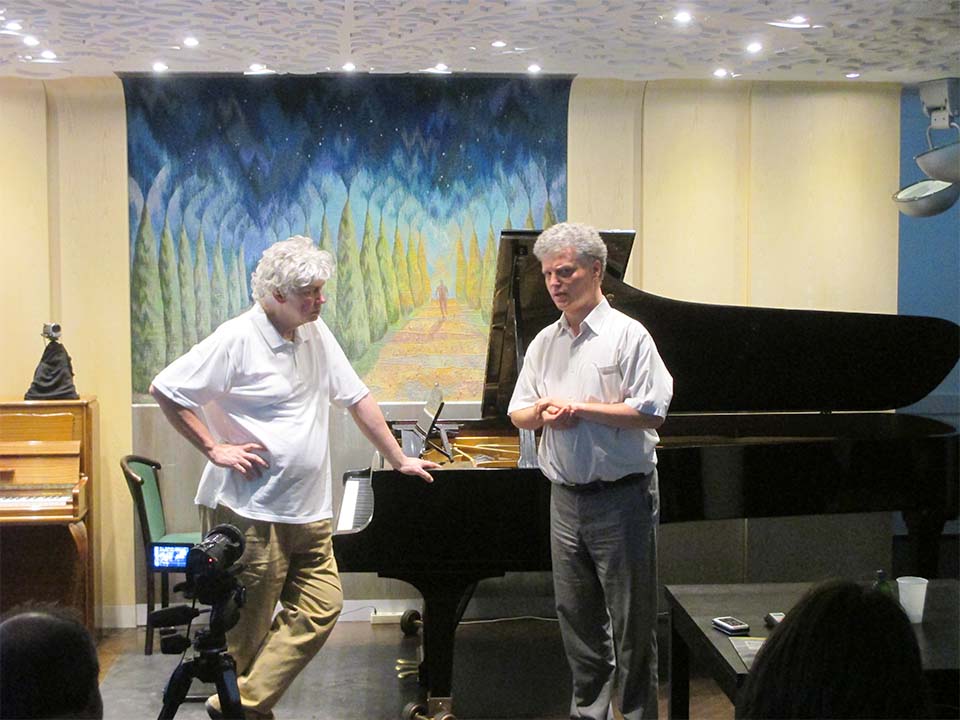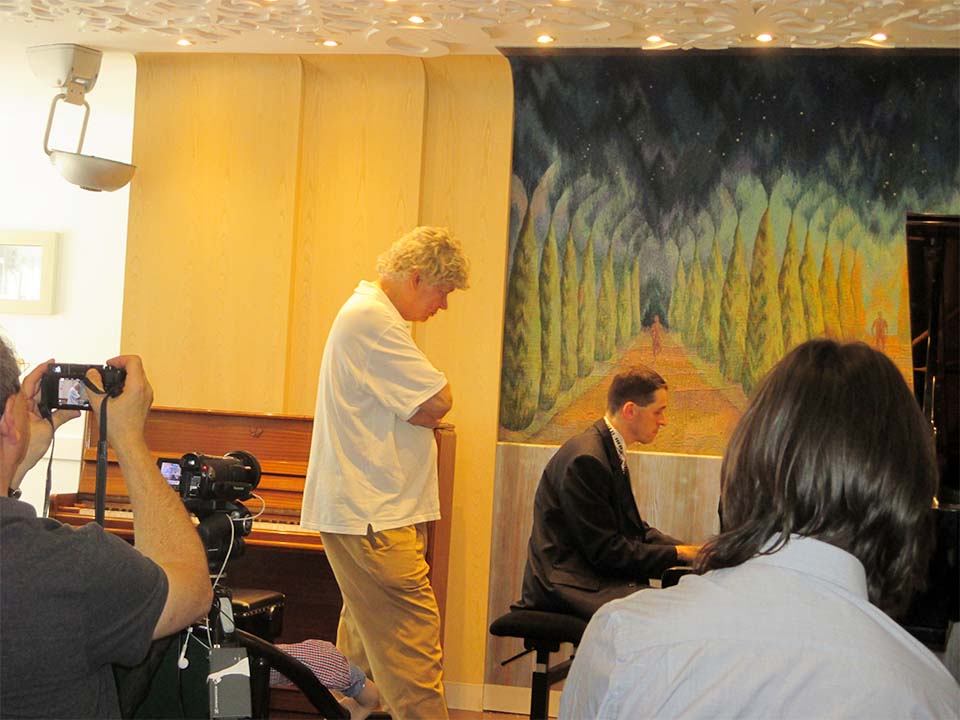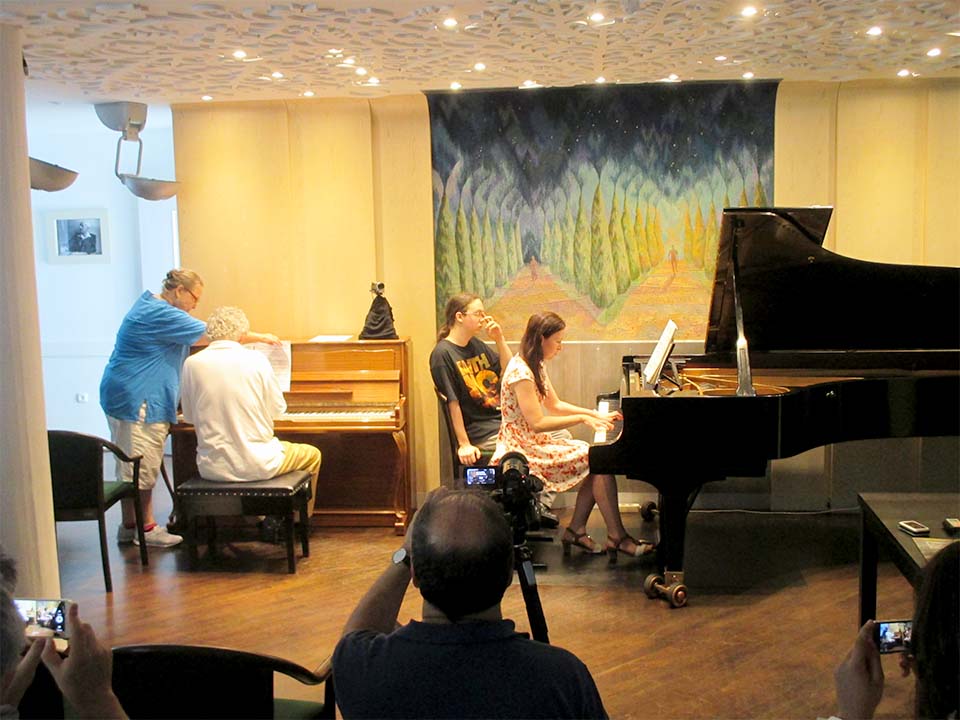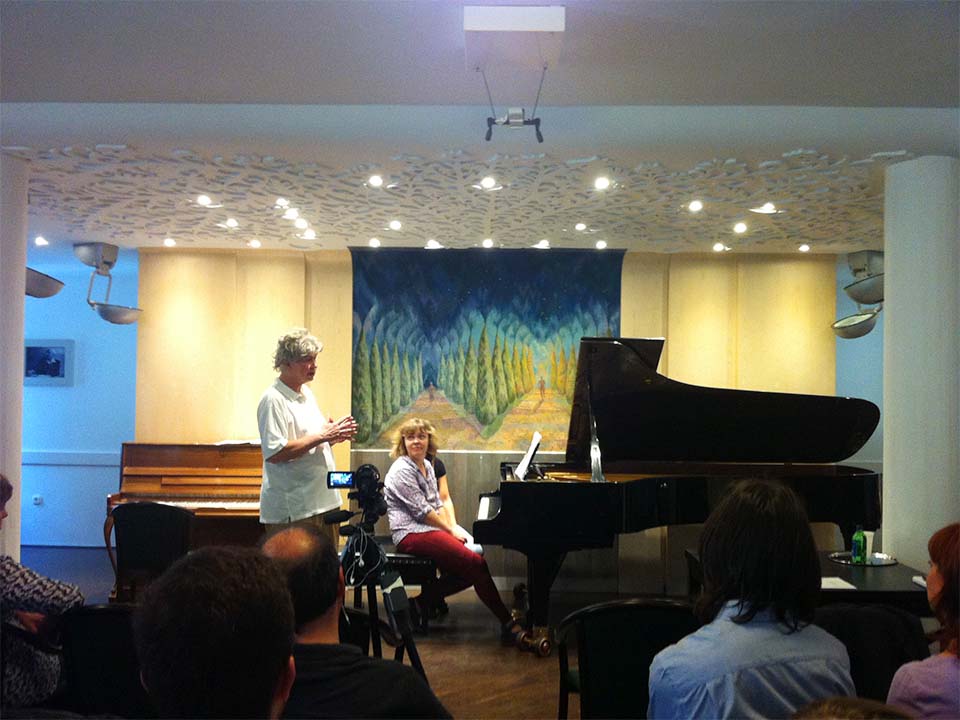Béla Bartók was born 135 years ago, therefore in January 2016, Zoltán Balog, the Minister of Human Resources, declared Bartók Year. Some of the programs were hosted by Béla Bartók Memorial House in the season of 2016/17. The director of the museum – Csaba Király concert pianist awarded with Franz Liszt Prize – launched this masterclass which worked on Bartók's solo piano works and transcribed versions of some orchestral works for piano. The two-day masterclass was given by Zoltán Kocsis concert pianist, conductor and composer two-time awarded with Kossuth Prize and awarded with Franz Liszt Prize in the concert hall of the Memorial House.


Piano students, concert pianinsts and piano teachers could apply from the age of 16 as active participants of the materclass. The selected students prepared with a varied program: we could lisen to works based on folksongs, some pieces from the Microcosmos, the most popular piano piece - Allegro Barbaro - and also some special pieces, e.g. the 1st movement from the 3rd Piano Concerto accompained by Zoltán Kocsis himself on an upright piano delivereded for this occasion, the Funeral March from Kossuth Symphony and a piano duet transcriprion of The Miraculous Mandarin. Many passive participants also took part: piano teachers, concert pianists, students of conservatories, colleges or universities. The second day was finished with a gala recital where the students played their program with the changes and suggestions advised by Zoltán Kocsis. The recital could be visited by a wider audience since many art lovers joined the professionals.


Both the active participants and the professional audience were able to learn some very important things about dealing with Bartók's music. Some examples:
- The tempo, dynamics and articulation signs must be interpreted correctly. In general, Bartók's sheet music contains precisely all instructions that help to approach the desired sound as best as possible, Bartók is very selective in the use of expressions and signs.
- We must use the metronome correctly. Bartók usually provided the score with precise metronome markings: there are places where the entire work must be played at one tempo, but there are many works where several parts are next to each other with different tempos, sometimes with a sudden change, and often with a gradual transition.
- For folksong arrangements, it is essential to know the lyrics of the featured folksong, since you have to play a melody on the instrument as you would sing it: in a rhythm that matches the lyrics.
- We need to practice the pieces correctly. The exact idea must be set the sooner the better, the desired sound must be implanted into our ears, and we must find and polish the appropriate movements to perfection for this. We have to understand everything that happens in the music – melodic, harmonic, dynamic and temporal happenings– and during practising we have to control with an open ear whether we really play the piece according to them.